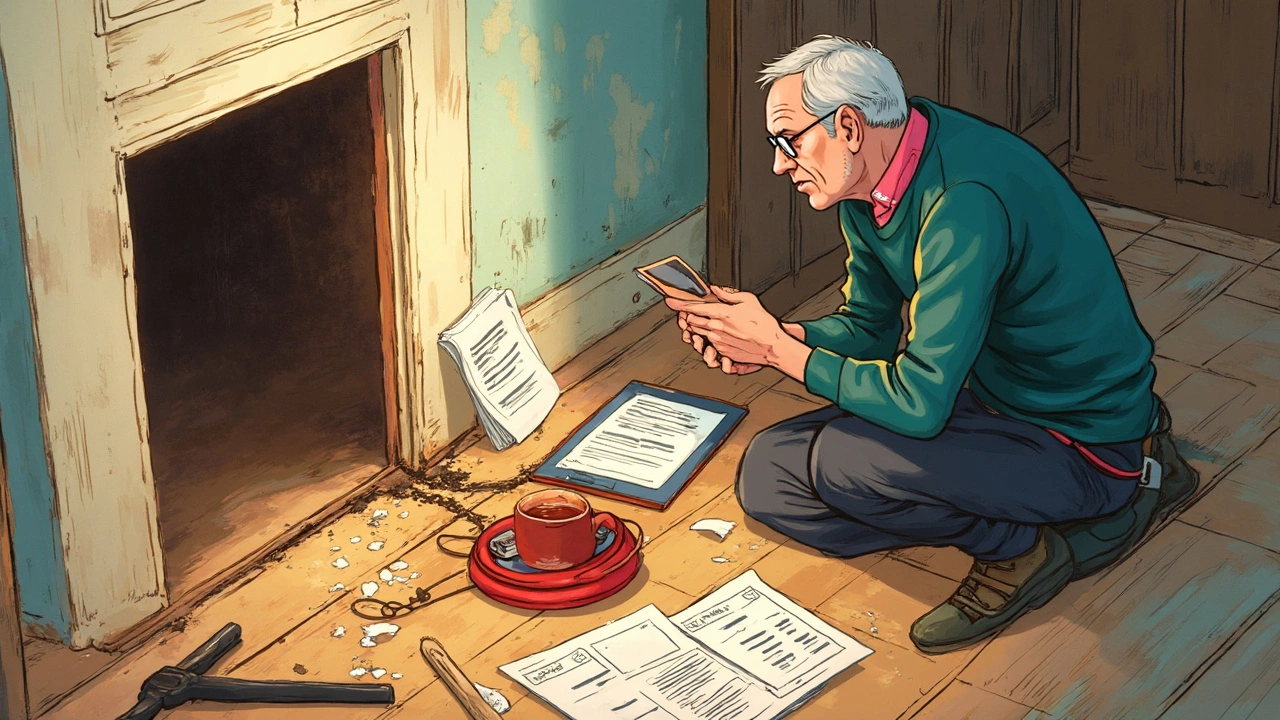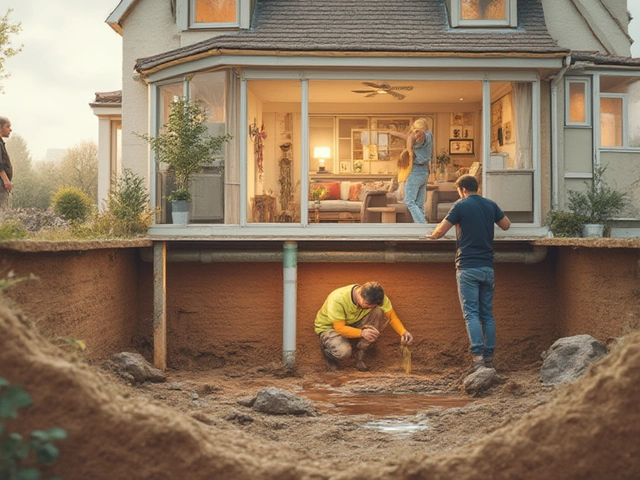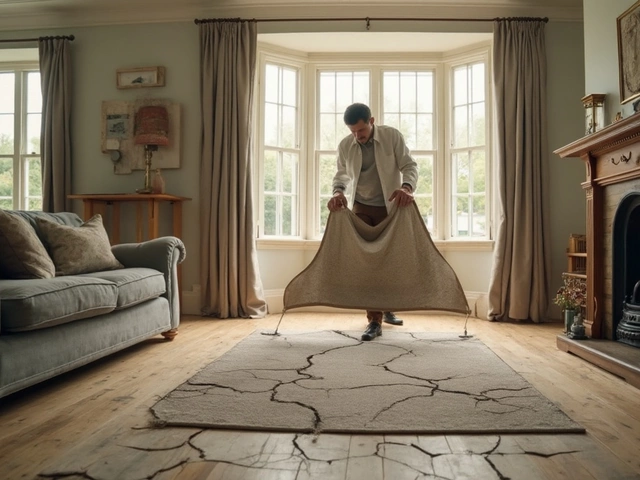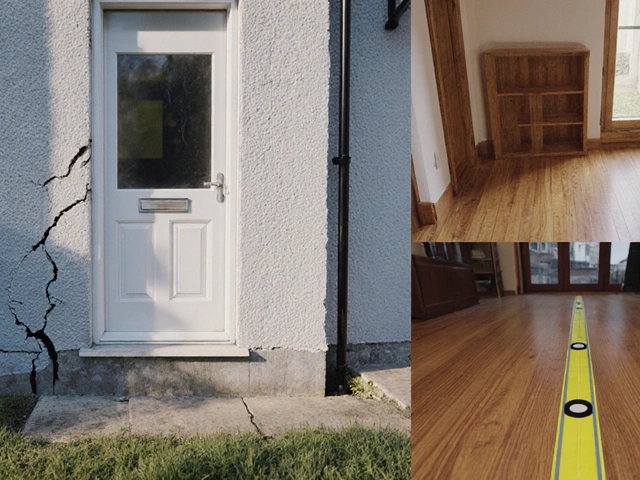Does Insurance Cover Structural Damage? Your Guide to Foundation Repair Claims

Cracks in the wall. Uneven floors. Doors that won't shut right. If you’ve noticed these problems, you’re probably worried about your home’s foundation—and how much fixing it could cost. Before calling that repair crew, almost everyone asks the same question: does insurance actually cover structural damage?
The answer isn’t simple—and it’s wrapped up in the fine print most people never read. Insurance policies don’t tend to spell things out in plain language, but they do have specific rules about what’s covered and what’s not. In most cases, your policy will only pay for sudden, unexpected events—think a pipe bursts or an earthquake shakes things up—while slow foundation settling is usually on your dime.
Here’s the thing: every insurance company has their own list of exclusions and surprise loopholes. Even a neighbor with the same insurance brand may get a different answer depending on what’s in their paperwork. Understanding these details could save you from a major financial headache if your home’s structure is in trouble.
- What Counts as Structural Damage?
- Homeowners Insurance: What’s Actually Covered?
- Common Reasons Claims Get Denied
- Filing a Claim for Foundation Damage
- Exceptions and Special Cases
- Smart Moves to Protect Your Foundation and Wallet
What Counts as Structural Damage?
When people talk about "structural damage," they often picture a house falling apart, but it's not always that dramatic. Structural damage usually means any problem with a building's main parts—stuff that holds the place up and keeps it standing. We're talking about foundation slabs, support beams, load-bearing walls, joists, and roof structures. If any of these are damaged, your home’s safety and value could be at risk.
Typical signs of structural damage include:
- Cracks wider than a quarter inch in walls or ceilings
- Doors or windows that suddenly stick or don’t close
- Uneven or sloped floors
- Gaps around window or door frames
- Bulging or bowing walls
Homeowners often confuse cosmetic issues (like a hairline crack in paint) with bigger problems. The difference? Cosmetic issues usually don’t get worse or affect how the house stands. Structural damage, on the other hand, usually points to something moving or failing under the surface.
Here’s a quick look at how common different structural issues really are—from smaller cracks to major foundation shifts:
| Type of Structural Problem | Chance in Avg. American Home (2024 data) | Typical Repair Cost ($) |
|---|---|---|
| Small Foundation Cracks | 35% | 300–900 |
| Major Foundation Shifts | 8% | 10,000–30,000 |
| Sloping/Uneven Floors | 12% | 2,000–7,000 |
| Bowed Walls or Beams | 6% | 4,000–15,000 |
If you spot any of these problems, it’s a smart move to act fast. Small issues can turn into expensive headaches, and once you notice real structural trouble, your insurance company is more likely to ask tough questions before paying for any repairs.
Homeowners Insurance: What’s Actually Covered?
If you’re staring at that crack in your basement and wondering if your insurance will foot the bill, here’s what you need to know. Most standard homeowners policies (like HO-3, which covers most U.S. homes) cover structural damage only when it’s caused by a sudden and accidental event. So, things like a burst pipe drenching your foundation, a fire collapsing part of the structure, or a tree falling on your roof are usually included. It all comes down to the cause—called a “covered peril”—not just the damage itself.
But everyday wear and tear or, say, that slow cracking from your house settling over years? Those are almost never covered. Insurance companies call those “excluded perils.” Here’s a quick breakdown to make it clear:
- Usually covered: Water damage from burst plumbing, sudden roof collapse due to snow load, fire, wind or hail, vandalism, accidental vehicle impact (like if a car crashes into your wall).
- Usually not covered: Normal aging and settling, poor construction or maintenance, earth movement (unless you’ve paid extra for earthquake coverage), flooding from outside (without a separate flood policy).
Policies say this in their own legal mumbo-jumbo, but here’s how it really shows up for folks like us. Take a look at this side-by-side comparison:
| Damage Cause | Covered by Standard Policy? | Special Notes |
|---|---|---|
| Burst pipe flooding the foundation | Yes | As long as it’s sudden and accidental |
| Rainwater seeping in from outside | No | Might need separate flood insurance |
| Earthquake cracks foundation | No | Needs extra earthquake coverage addon |
| Rotten wood from gradual leaks | No | Seen as maintenance, not an accident |
| Tree falls on roof, damages structure | Yes | Sudden event, so it’s usually included |
If you’re not sure what your policy covers, don’t just guess. Grab a copy (even if it’s digital) and look for the page listing “Perils Insured Against” and “Exclusions.” That’s where the answers really hide. And if you can’t find it, call your agent and ask point-blank about foundation repair or structural damage. Sometimes a short phone call can save you twenty grand in regret later.
Common Reasons Claims Get Denied
A lot of folks get a rude shock when their insurance claim for structural damage gets denied. Sure, you’d expect your policy to have your back when you’re staring at cracked walls or a sagging floor, but adjusters look for reasons to say no. Here’s why most claims get tossed aside before you can even plead your case.
- Normal wear and tear: If your foundation damage happened slowly—think decades of the ground shifting or water draining the wrong way—insurance usually says it’s just the cost of being a homeowner. Anything labeled “maintenance issue” is dead on arrival for coverage.
- Pre-existing damage: If inspectors or adjusters spot signs that problems were there before you got insurance (or before you tried to file), you’re out of luck. Insurance companies pull property records and may even check old photos.
- Flood or earth movement: Basic homeowner policies don’t cover damage from floods, earthquakes, or landslides. You need specific extra coverage for these. Only about 15% of U.S. homeowners actually have flood insurance.
- Bad design or construction: If your house wasn’t built right in the first place—think poor materials, shoddy work, or corners cut during construction—insurance will say it’s the builder’s fault, not theirs.
- Lack of quick action: Sometimes claims are denied just because the homeowner waited too long. The longer you wait, the easier it is for insurance to claim you made things worse by ignoring the issue.
Check out these denial rates for foundation-related insurance claims, based on data from a recent survey of homeowners:
| Reason for Denial | Percentage of Claims Denied |
|---|---|
| Wear and tear | 44% |
| Flood/earth movement | 22% |
| Pre-existing damage | 18% |
| Poor construction/design | 10% |
| Other | 6% |
Before you file a claim, grab a copy of your policy and look for these exclusions. Ask your agent to spell things out clearly—you don’t want jargon, just straight answers. If you’re on the fence, get a trusted contractor to inspect the damage and document exactly what happened, and when.

Filing a Claim for Foundation Damage
If you think your house has foundation problems and you’re hoping insurance might help, you’ll want to follow the right steps. Filing a claim for foundation damage isn’t always smooth, and insurance companies are usually looking for reasons to say no. But knowing the process can save you time, stress, and maybe a chunk of money.
The most important thing is understanding if the type of damage you have lines up with what your policy covers. Most standard home insurance won’t pay for settling, shifting, or wear-and-tear over time. But if your trouble started with a burst pipe, a sudden collapse, or a covered disaster, you might have a shot at getting help.
Here’s what you should do if you’re thinking about filing a claim for structural damage:
- Review Your Policy: Dig up your paperwork or access your account online. Look at the “dwelling coverage” and check for any fine print about exclusions, like normal settling or cracking from age.
- Document Everything: Take photos and videos of visible damage. Make note of dates and any events (like flooding or plumbing leaks) that might have triggered the problem. Save receipts for repairs or inspections.
- Contact Your Insurance Company: Call your agent or claims department to start the claim process. Be direct and stick to the facts. Tell them what happened and when you first noticed the damage.
- Schedule an Adjuster Visit: The insurance company will often send an adjuster to check out the damage. Walk them through the affected areas and provide your documentation.
- Get an Independent Inspection: Consider hiring a foundation specialist or structural engineer on your own. Sometimes their report can back up your claim (or help if you need to dispute a denial).
- Stay Organized: Keep track of all calls, emails, quotes, and paperwork. Insurance claims can drag on, and having a paper trail helps.
Now, here’s a quick look at how often foundation claims actually make it:
| Reason for Claim | Average Approval Rate (%) |
|---|---|
| Burst pipe damage | 60 |
| Sudden sinkhole | 80 |
| Earthquake (with extra coverage) | 50 |
| Normal settling/wear | 5 |
Nobody likes dealing with red tape, but being prepared makes all the difference. If your claim gets denied and you think it’s not fair, you can appeal—and sometimes bringing in a public adjuster helps push things in your favor.
Bottom line: Always read your policy and keep records. Don’t count on insurance to cover routine foundation problems, but if sudden damage strikes, jumping on these steps could get you help with those hefty repair bills.
Exceptions and Special Cases
Here’s where things get tricky: there are times when insurance might cover foundation or structural damage, even though most policies don’t pay for slow wear and tear. Let’s look at a few real-world situations that could tip things in your favor.
If the damage comes from a "covered peril," like a burst pipe or house fire, insurance often steps in. For example, if a water line breaks under your house in the middle of the night and your foundation cracks, that sudden event is usually covered. Same goes for fire, explosions, or, in some states, even a car careening into your living room (not a joke—it happens!).
But insurance almost never pays for damage due to floods or earthquakes—those require separate policies. If you live somewhere with lots of flooding or shaking ground, check if you have (or need) flood or earthquake insurance. They’re sold completely separately from standard home insurance.
Some companies have “endorsements” or “riders” you can add to cover very specific cases, like foundation shifting from faulty soil, tree roots, or sewer backups. Ask your agent if any of these add-ons are available—you might be surprised what extra things you can get covered for a few bucks more each month.
- If you’re in a newer house, home builder warranties can also help. They might pay for repairs on structural defects up to 10 years after you move in, but not for problems caused by neglect or natural disasters.
- Certain states, like Texas and California, have their own rules about foundation claims, so local laws also make a difference. Always look up state-specific info, especially if you’re in an area where soil moves a lot.
So, if you’re staring at a cracked slab or leaning walls, don’t just assume your claim will be denied. Review your policy’s "perils" list, look for possible coverage add-ons, and ask your agent specific “what if” questions. You might find a loophole or exception that saves you thousands.
Smart Moves to Protect Your Foundation and Wallet
When you see foundation cracks, your first instinct might be to panic. But, some simple habits and quick checks can help keep your home safe—and save you a fortune on repairs down the road. A lot of people wait until damage gets serious, but a little prevention goes a long way. Here’s what works best based on what real foundation pros and insurance adjusters keep saying.
- Insurance review: Dig out your policy and look for the “exclusions” section. Most standard plans don’t cover damage from normal settling, tree roots, or neglected leaks. If you’re worried, call your agent and ask if added coverage is available, like a rider for earth movement or water backup.
- Control your drainage: Gutters clogged with leaves can spill water right against your house. Clean them out every spring and fall, and double-check where your downspouts release. Water pooling near the foundation is one of the biggest reasons for shifting or cracks.
- Mind the grading: The dirt around your place should slope away from the foundation—experts say at least 6 inches over 10 feet is best. If rain gathers at the base, add soil to redirect it.
- Fix leaks fast: Plumbing problems under your home are a major culprit for foundation issues. If you notice low water pressure, higher bills, or damp spots indoors, call a plumber ASAP.
- Don’t plant trees too close: Big roots can push or shift your foundation over time. Stick to smaller plants within 10 feet of your house, and only plant larger trees much farther out.
Got a newer home or thinking about a remodel? It’s smart to get a professional inspection, even if things look okay. Some companies use laser levels or ground sensors to spot tiny shifts you’d miss. It might seem like overkill, but these checks can help you catch issues while they’re cheap to fix.
If you’re curious how common foundation problems are, here’s what repairs look like nationwide:
| Type of Repair | Average Cost (USD) | Typical Cause |
|---|---|---|
| Small Crack Sealing | $500 - $1,500 | Settling, Shrinkage |
| Pier Installation | $3,000 - $7,000 | Major Shifting, Sagging |
| Drainage Solutions | $2,000 - $6,000 | Poor Grading, Water Issues |
| Major Foundation Overhaul | $15,000+ | Neglect, Water Damage, Large Trees |
If you ever actually do need to file a foundation claim, save all receipts and photos from the very start—insurance companies love documentation. No one wants a big repair bill. But a few smart moves now can mean you never have to see one.


